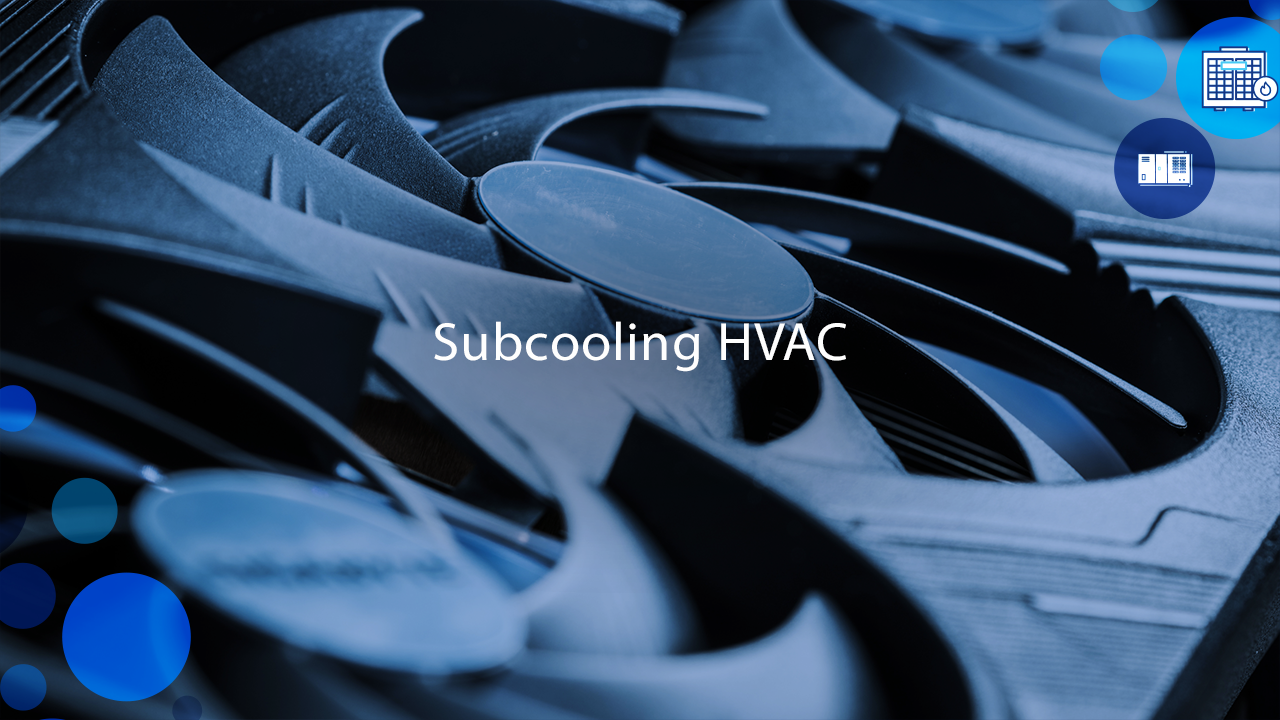As an HVAC contractor, it’s essential to have a deep understanding of the various technical terms associated with HVAC systems. One with significant importance is subcooling. Subcooling is critical in the efficiency and operation of HVAC systems, particularly in air conditioning units. In this article, we’ll explore what subcooling is, its significance in HVAC systems, and its impact on energy efficiency, providing you with valuable insights to enhance your work as an HVAC contractor.
Understanding Subcooling in HVAC
In simple terms, subcooling refers to the process of cooling a liquid refrigerant below its saturation temperature. In HVAC units, the refrigerant absorbs heat from the indoor air and transfers it to the outdoor environment. It undergoes a continuous cycle of evaporation and condensation facilitated by the compressor and other components.
During the cooling cycle, the gaseous refrigerant enters the condenser coil in the outdoor unit. As it passes through the condenser coil, the refrigerant releases heat and condenses into a liquid form. The temperature at which this condensation occurs is known as the “saturation temperature” or the boiling point of the refrigerant at a specific pressure.
How to Measure Subcooling
You can rely on specialized tools such as subcooling calculators and gauges to measure and regulate subcooling. Here’s how you get started:
- After gathering your materials, identify the liquid line in the HVAC system. This line carries the condensed liquid refrigerant from the condenser to the expansion valve.
- Next, connect the pressure gauge to the service port on the liquid line. Refer to the manufacturer’s guidelines to ensure proper connection. Record the pressure reading displayed on the indicator.
- Using the pressure-temperature chart, match the pressure reading from the gauge to the corresponding saturation temperature. This represents the boiling point of the refrigerant at that specific pressure.
- Use a digital thermometer to measure the liquid refrigerant temperature in the fluid line. Ensure the thermometer probe is in direct contact with the refrigerant. Then, record the temperature reading.
- Subtract the saturation temperature from the liquid line temperature. The result is the subcooling value.
- Compare the calculated subcooling value to the manufacturer’s specifications or recommended range for the particular HVAC system and refrigerant. This will help you determine if the subcooling is within the desired range.
Optimizing Subcooling
What happens if the subcooling reading is outside of the recommended range? That means it still needs to be optimized. To fix any issue, here’s what you do:
- Familiarize yourself with the manufacturer’s specifications or guidelines for the HVAC system you’re working on. Understand the recommended subcooling range for the specific refrigerant being used.
- Use the steps outlined in the previous section to measure the subcooling of the system.
- Check for issues such as restricted airflow, improper refrigerant charge, or a faulty expansion valve.
- Refrigerant charge: Improper refrigerant charge is a common cause of subcooling issues. Use superheating and subcooling methods to determine if the refrigerant charge is accurate. Adjust the refrigerant charge if necessary, following the manufacturer’s guidelines and considering factors like outdoor temperature.
- Airflow: Inadequate airflow can lead to improper subcooling. Inspect and clean the condenser coil, ensuring it is free of debris and obstructions. Verify that the condenser fan motor is operating correctly and producing sufficient airflow.
- Expansion valve: Check for signs of a stuck or faulty valve. Clean or replace the expansion valve to ensure proper refrigerant flow.
- After addressing potential issues and making necessary adjustments, remeasure the subcooling. Ensure that the subcooling reading now falls within the recommended range.
- Lastly, record the initial subcooling measurement, the adjustments made, and the final subcooling value achieved. This documentation can be valuable for future reference, maintenance, and troubleshooting.
Remember to explain the importance of subcooling and how optimizing it improves your clients’ system efficiency, cooling capacity, and overall performance. Offer maintenance tips to help them maintain proper subcooling levels in the future.
Motili: Your Trusted HVAC Management Partner
Motili offers a comprehensive suite of services designed to optimize HVAC system performance, reduce downtime, and improve energy efficiency. Their ability to proactively leverage data and predictive analytics to identify and address HVAC system issues is a key strength. By monitoring equipment performance and analyzing data in real time, Motili can detect potential problems early on and minimize disruptions to clients’ operations.
Regarding subcooling, since Motili is constantly surveying data, they can detect any deviations from the optimal range and promptly address the underlying issues. Furthermore, Motili offers preventative maintenance programs tailored to the specific needs of HVAC systems. These programs include regular inspections and tune-ups to ensure that subcooling levels are within the desired range. Identifying and rectifying subcooling issues early on can mitigate potential problems, preventing costly breakdowns and optimizing system efficiency.












